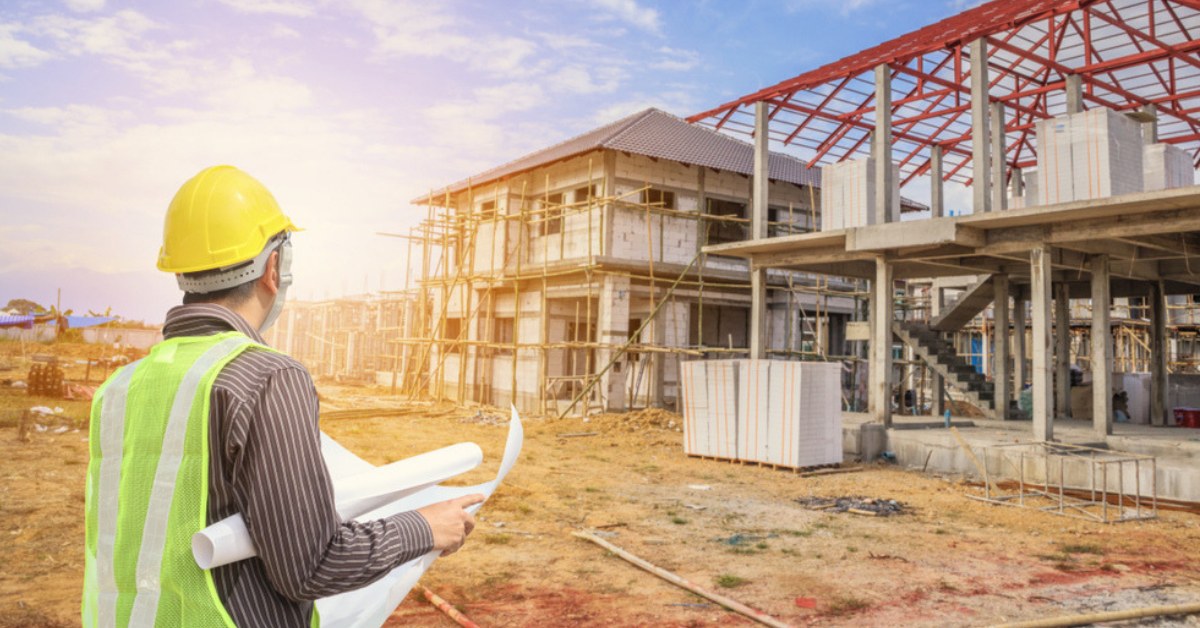Construction

The primary divisions include:
Construction Materials: Construction materials form the backbone of the building industry, encompassing a diverse array of natural, manufactured, and composite materials tailored to meet structural, functional, and aesthetic needs. From traditional materials like wood, stone, clay, and glass to modern innovations such as reinforced concrete, high-strength steel, engineered wood, and graphene enhanced composites, and sustainable options like hempcrete, bamboo, compressed earth blocks, straw bales, cob, recycled aggregates, and mycelium-based products, each material offers unique properties of strength, durability, cost-effectiveness, and environmental compatibility. Metals like steel and aluminum provide structural integrity, while polymers and plastics such as PVC and polycarbonate contribute to flexibility and utility. Insulating materials, including fiberglass and foam boards, enhance energy efficiency, while finishing materials like tiles, paints, and sealants ensure long-term resilience and visual appeal. Emerging technologies have introduced high-performance materials like carbon fiber, transparent wood, smart glass, and phase-change materials, which cater to advanced applications with enhanced capabilities. The selection of materials is driven by factors such as functionality, load-bearing capacity, environmental conditions, long term sustainability, and compliance with industry standards. Together, these materials enable the construction of everything from simple homes to complex infrastructure and bring shape to resilient, efficient, and aesthetically pleasing structures.
Construction tools, machinery, and technology: These indispensable elements of modern construction provide incredible mechanical advantages, enabling greater productivity with less effort, driving efficiency, precision, and successful project completion. Hand tools like hammers, wrenches, and measuring devices remain vital for detailed, manual tasks. Power tools such as drills, saws, and sanders enhance speed and accuracy in construction processes. Heavy machinery, including excavators, bulldozers, cranes, and concrete mixers, facilitates large-scale operations like earthmoving, lifting, and material handling. Advanced surveying tools, such as total stations, GPS devices, and drones, ensure precise layout and site analysis. Safety equipment, from PPE to fall protection systems, is crucial for safeguarding workers on-site. Cutting-edge construction technology, such as Building Information Modeling (BIM), 3D printing, robotics, and augmented reality (AR), has revolutionized design, planning, and execution, enabling greater collaboration, sustainability, and productivity. Specialized tools like rebar benders, tile cutters, and concrete vibrators cater to specific tasks. Maintenance and cleaning equipment ensure the longevity and cleanliness of tools and sites, ensuring prolonged efficiency, reliability, and safety.
Construction trades: Encompassing a diverse array of skilled professions vital to the construction, maintenance, and renovation of buildings and infrastructure, with each trade contributing expertise to specific stages of a project. Architects, designers, engineers, urban planners, and project managers oversee design, development, planning, and management to successfully execute projects and transform visions into reality. Safety officers, inspectors, and site surveyors ensure compliance with industry regulations, building codes, project specifications, and quality standards. Heavy equipment operators, excavators, and pile drivers handle groundwork and machinery operations to prepare and stabilize construction sites. Structural trades like carpentry, masonry, and steelworking focus on establishing the framework and core stability of structures. Utility and systems trades, including electricians, plumbers, boilermakers, HVAC technicians, and low voltage technicians install and maintain essential systems for functionality and comfort. Finishing trades, including proofers, roofers, floor layers, insulation workers, drywall installers, painters, and glaziers, play a vital role in protecting structures from the elements, improving durability, while enhancing their aesthetic appeal, delivering a polished finish to completed spaces. Professional installers from various trades secure fixtures like doors, windows, and cabinets to building structures and install appliances, ensuring proper functionality and seamless integration. Specialized trades like welders, elevator installers, and solar panel technicians bring unique skills to meet modern technological and environmental demands. Demolition workers and salvage teams dismantle structures while recovering reusable materials. Landscape trades, including hardscapers and irrigation specialists, shape outdoor environments and beautify the surroundings. By integrating traditional craftsmanship with cutting-edge techniques and tools, construction trades continue to deliver astounding structures that meet the evolving needs of modern society.
Residential, Commercial, and Industrial Construction: The construction industry is broadly categorized into residential, commercial, and industrial sectors, each playing a vital role in shaping the built environment and meeting distinct societal needs. Residential construction focuses on creating homes and living spaces for individuals, families, and communities, including houses, condos, apartments, housing complexes, and custom-built residences. It emphasizes comfort, functionality, aesthetics, and resource efficiency while incorporating sustainable practices and modern designs. Commercial construction, supports businesses, public services, and human activities through the development of retail spaces, office buildings, civic centers, service facilities, religious buildings, recreational facilities, schools, healthcare facilities, warehouses, and mixed-use developments. These projects prioritize provision of resources, accessibility, and scalability, often involving complex designs to accommodate high traffic and specialized uses. Industrial construction serves the backbone of production and logistics by building large-scale facilities such as energy plants, factories, manufacturing plants, industrial mills, and resource processing facilities. These projects demand durability, scalability, and compliance with industry-specific standards, supporting vital functions like energy generation, mining, manufacturing, and product distribution. Together, residential, commercial, and industrial construction form the pillars of societal infrastructure, enabling people to thrive by providing homes, workplaces, public services, and industrial capabilities that fuel economic growth and enhance quality of life.
Infrastructure Construction: This area encompasses the creation of essential systems and structures that enable economic activity, societal functionality, and environmental management on a grand scale. This sector focuses on developing transportation networks, energy systems, water and waste management facilities, urban utilities, communication frameworks, and industrial hubs, all designed to serve broad populations and drive sustainable growth. From highways, bridges, ports, and railways to renewable energy plants, water treatment facilities, and fiber optic networks, these projects demand interdisciplinary collaboration, advanced planning, and significant resources to ensure durability, safety, and efficiency. Infrastructure projects are defined by their complexity, longevity, and critical role in public well-being, requiring innovative technologies and eco-friendly designs to meet the requirements of a rapidly developing world. By supporting mobility, connectivity, and resource management, large-scale infrastructure construction underpins global progress, connecting communities, empowering industries, and enhancing quality of life across generations.